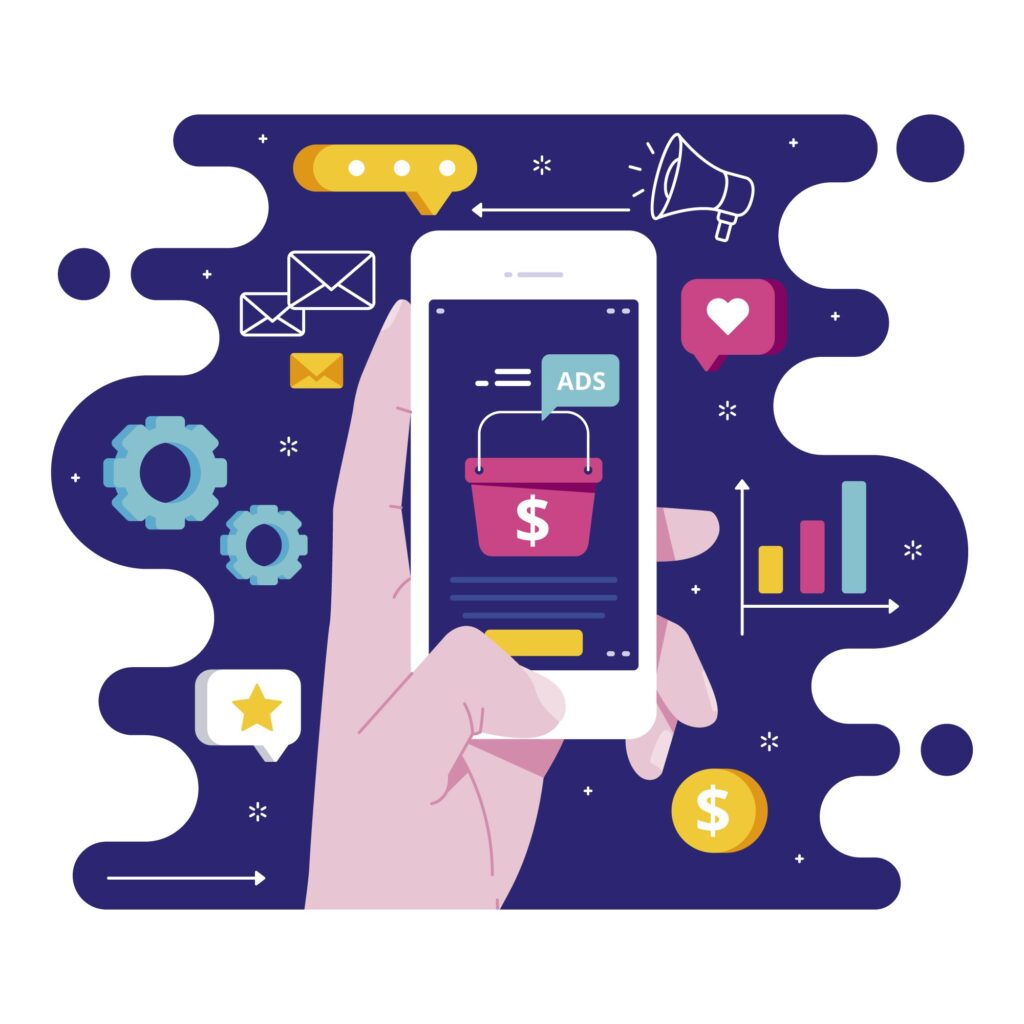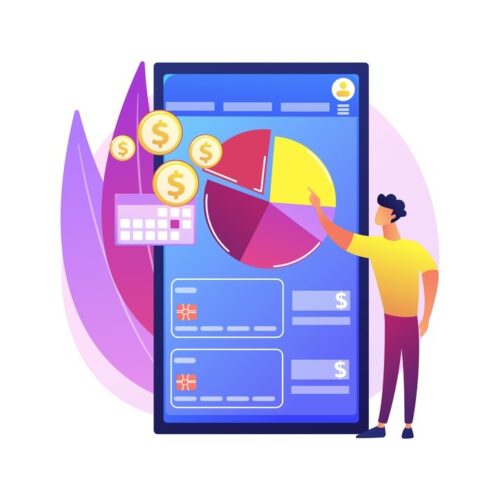Building an iOS application without a clear understanding of the potential costs can lead to unforeseen challenges and complications.
There isn’t a simple answer to the cost question, because there are so many factors to consider relating to the functionality of your app and how you’ll develop it. And if you find a definitive answer out there, the unfortunate truth is that it’s probably not accurate for your specific application. We know it can be frustrating when you’re looking for an answer and can’t find it. That’s why this article will give you some ranges and a clear idea of the factors that will drive up and down the cost of developing an iOS application.
We at Mallow have played a pivotal role in guiding a diverse clientele across different sectors in making well-informed decisions regarding iOS application projects. We provide transparent cost evaluations that empower our clients to make prudent decisions for their businesses. Our dedication to transparency and dependability is what keeps drawing our clients back to us repeatedly, establishing trust and enduring partnerships.
Upon reading this article, you will fully understand the approximate expenses tied to the development of an iOS application. You will explore in-depth insights that provide a breakdown of the costs involved in constructing a comprehensive iOS application.
What factors affect the cost of iOS application development?

The cost of developing an iOS application can vary significantly based on several factors, each of which is crucial in determining the overall project budget.
Here are the key factors that influence the cost of iOS application development:
Factors that contributes directly:
- App complexity – The complexity of your application is a major cost driver. Simple apps with basic features will cost less, while complex apps with advanced functionalities, multiple user roles, and intricate integrations will be more expensive.
- Design and user experience – The quality of your app’s user interface and user experience design can impact costs. Custom, visually appealing designs typically require more resources and budget. According to Forrester, balancing release speed with a focus on quality is crucial, as the cost of failure and time to recover from it emphasize the importance of quality processes in app development. Custom, visually appealing designs typically require more resources and budget.
- Features and functionality – The number and complexity of features you want in your app directly affect the cost. Features like geolocation, push notifications, and in-app purchases add to the development effort.
- Backend development – The backend of your app, including databases, servers, and APIs, can be a significant cost factor. Building and maintaining a robust backend can incur ongoing expenses.
Below is a table that outlines key aspects for iOS backend development, along with illustrative examples of platforms, services, and tools in each category.
| Aspects | Examples (Platforms/Services/Tools) |
| Server Hosting | AWS, Google Cloud Platform, Microsoft Azure, Heroku, DigitalOcean etc. |
| Database | Firebase Realtime Database, Firebase Cloud Firestore, MySQL, PostgreSQL, MongoDB etc |
| Authentication & Authorisation | Firebase Authentication, Auth0, AWS Cognito, Keycloak |
| API Integration | RESTful APIs, GraphQL, gRPC, Third-party APIs (e.g., Google Maps, Twitter), Custom APIs |
| File Storage & CDN | Amazon S3 (Simple Storage Service), Google Cloud Storage, Azure Blob Storage, Firebase Cloud Storage, Cloudinary |
| Real-time Communication | WebSocket, Firebase Realtime Database (for chat apps), MQTT (Message Queuing Telemetry Transport), Pusher, Socket.io |
| Logging and Monitoring | Google Cloud Monitoring, Amazon CloudWatch, New Relic, Datadog, |
| Scalability & Load Balancing | AWS Elastic Load Balancer, Google Cloud Load Balancing, NGINX Load Balancer, Kubernetes (for container orchestration) |
| Security | JWT (JSON Web Tokens), OAuth 2.0, SSL/TLS, Web Application Firewalls (WAFs), Security Headers (e.g., Content Security Policy) |
| Data Backup & Recovery | Regular Data Backups, Version Control (e.g., Git), Automated Disaster Recovery Plans, Data Replication |
Please note that these factors serve as key aspects, and the examples provided represent various aspects of backend development in an iOS application. Depending on the unique requirements of your project, you have the flexibility to select different platforms, services, and tools that align with your specific backend development needs.
- Testing and quality assurance – As you might imagine, it would be foolish to launch an application without any testing and QA. When it starts to increase your costs is when you require robust documentation and testing beyond the normal (like security testing and performance testing).
- Project management – Every application needs somebody to keep it on track and hit the milestones along the way. This can be a part of someone’s role, but if it requires (due to the size of the team or complexity of the work) someone to be in a dedicated project manager role it will increase the overall cost of development.
- Geographical location – The location of your development team can significantly impact costs. Developers in regions with higher living costs tend to charge more than those in lower-cost areas.
Additional contributing factors:
- Third-party integrations – If your app requires integrations with third-party services or APIs, it can impact costs. These integrations may involve additional development and licensing fees.
- Legal and compliance requirements – Apps must comply with various legal and regulatory standards. Ensuring legal compliance can require additional resources and budget.
- Security measures – Implementing robust security features and regular security audits can add to development costs but are essential for protecting user data.
- Customisation vs. templates – Custom-developed components tend to be more expensive than using pre-built templates or components. Deciding between customisation and templates can impact costs.
How does iOS contribute to reducing app development costs?

- Swift programming language – iOS development relies on Swift, a modern programming language designed by Apple for performance and developer productivity. Its concise and expressive syntax contributes to faster development cycles. According to Apple’s Swift overview, Swift is optimized for safety and speed, helping reduce both bugs and development time.
- Reusability – iOS applications are designed to work on various Apple devices, such as iPhones, iPads, and Macs. This reusability of code and design elements across different Apple products can lower development expenses.
- Integrated development environment (IDE) – Apple’s Xcode, the official iOS development IDE, offers a wide range of tools and features that streamline the development process. It includes code completion, debugging tools, and Interface Builder for UI design, contributing to development efficiency.
- Quality assurance – iOS benefits from rigorous app review processes before publication on the App Store. This helps ensure a higher standard of quality and may reduce post-launch debugging and support costs.
- User interface components – iOS provides a collection of pre-designed user interface components, known as UIKit, which simplifies the app design process. Also, you can use SwiftUI for designing your application’s interface, since it is the latest declarative UI framework introduced by mobile application. This reduces design costs and accelerates development. Apple’s strict UX guidelines help create user-friendly and intuitive applications. By adhering to these guidelines, developers can avoid costly redesigns and ensure user satisfaction from the start.
- Security and privacy – iOS places a strong emphasis on user data security and privacy, which can reduce the likelihood of costly data breaches and legal issues associated with user data mishandling.
- Community and resources – The iOS development community is vast and active, providing access to resources, open-source libraries, and forums. Developers can leverage these resources to solve problems and save development time.
So how much does developing an iOS application actually cost?

It depends on whether you choose to harness in-house expertise or explore the offshore application development route, along with a myriad of factors that intricately weave together to define the overall development cost.
When building an iOS app with an in-house team, you’ll need to budget for salaries, benefits, office space, and equipment for your developers and any other necessary team members, such as designers and testers. The cost of hiring and retaining experienced iOS developers can be substantial, especially in regions with high demand for tech talent, such as Silicon Valley.
On the other hand, outsourcing to an offshore development team offers potential cost savings. Offshore developers often provide competitive rates, but the quality of work and communication may vary. Consider factors like the size of the offshore team, the project’s complexity, and the chosen outsourcing location. While cost savings can be significant, you must carefully evaluate the credentials and track record of the outsourcing firm to ensure the success of your project.
The cost of developing an iOS application in-house
The cost of hiring in-house iOS application developers can vary significantly based on factors such as location, experience, and skill set. A report by Business of Apps highlights that hiring a US-based app developer can cost approximately $100,000 to $133,000 per year, reflecting the high demand and living costs in regions like Silicon Valley. In-house developers require office space, equipment, and other overhead expenses, all of which contribute to the overall cost. Businesses must consider their budget and project requirements when determining the cost of in-house development.
Consider the following essential factors when hiring an iOS application developer:
- iOS proficiency – Look for developers with a deep understanding of iOS development, including knowledge of Swift and the iOS SDK.
- Mobile development experience – Prior experience in iOS mobile app development, is valuable for understanding mobile-specific challenges and user expectations.
- Programming proficiency – Assess their coding skills, focusing on their ability to write clean, efficient, and maintainable code in the iOS environment.
- UI/UX design skills – A developer who understands user interface (UI) and user experience (UX) design principles can contribute to creating visually appealing and user-friendly apps.
- Experience with state management – Developers should have experience managing the app’s state and data flow efficiently, which is crucial for app responsiveness and stability.
- Problem-solving abilities – Seek developers who can think critically and solve complex issues, a common requirement in iOS application development.
- Collaboration skills – Effective communication and teamwork are vital, as iOS developers often work with designers, testers, and other team members to create successful applications.
The cost of developing an iOS application through outsourcing
Conversely, the outsourcing of iOS development entails enlisting the services of a third-party development agency or freelance professionals to conceive and maintain your iOS application. This strategy affords you the adaptability to scale your development team according to your project’s needs, often minimising initial expenses since you only incur costs for services rendered.
Outsourcing can prove especially advantageous for brief undertakings since you don’t have to take the pressure of managing the project all by your own as you have a team to look after it, MVP (Minimum Viable Product) development, or when you require specialised expertise. Moreover, it provides the opportunity to tap into a global talent reservoir, potentially granting you access to a more extensive array of skill sets.
Outsourcing iOS app development can offer considerable cost advantages, but it’s essential to be aware of evolving industry trends that affect development complexity and costs. For instance, increasing expectations around personalization, security, and cross-platform compatibility are driving up the effort required in modern app projects. Staying updated with TechCrunch’s coverage on mobile app industry trends can help you anticipate how emerging technologies and user demands might impact development timelines and budgets.
However, outsourcing may introduce challenges concerning communication, disparities in time zones, as well as apprehensions related to data security and quality control. For an in-depth exploration of how to proficiently navigate the selection process of an application development team, you can refer to the article on how to hire an application development team.
Presented below is a simplified table that provides approximate cost ranges for applications of different sizes, considering various development options such as in-house development or outsourcing.
| Application Level | In-House Expertise (Approx. Cost in USD) | Outsourcing (Approx. Cost in USD) |
| MVP | Starts at $20,000 | Starts at $10,000 |
| Small-sized Application | Starts at $35,000 | Starts at $15,000 |
| Medium-sized Application | Starts at $120,000 | Starts at $60,000 |
| Enterprise-level Application | Starts at $400,000 | Starts at $180,000 |
Please note that these cost estimates are approximate and can vary widely based on factors like the complexity of features, the size of the development team, geographical location, developer skill levels, project duration, and any additional services required (e.g., design, QA, ongoing maintenance).
How do application development firms determine the cost they bill to you?
With a comprehensive grasp of the complexities of constructing an iOS application and the associated costs, a fundamental question surfaces: Is the cost reasonable? To decisively address this query, it’s crucial to explore the determinants that govern how application development companies arrive at their pricing structures.
For in-depth insights, refer to this article on how application development companies determine the cost they charge. This resource will empower you to delve into how these companies formulate their pricing strategies, providing invaluable insights into the pricing dynamics prevalent in the industry.
If you need further clarification on how we could help you out with your requirement, then talk to one of our experts.
Your queries, our answers
Mobile application development involves creating software applications designed to run on mobile devices like smartphones and tablets. These apps can be native (built specifically for iOS or Android), cross-platform (designed to work on multiple platforms), or hybrid (combining elements of both).
Our mobile app development process includes the following stages: requirement gathering and analysis, design and prototyping, development and coding, testing and quality assurance, deployment, and post-launch support. Each stage is crucial to delivering a high-quality application.
To gain deeper insights into the experience of working on a mobile project with Mallow, explore more details here.
The choice between native and cross-platform development depends on your project’s goals, budget, and target audience. Native apps offer better performance and a more tailored user experience, while cross-platform apps allow for faster development and lower costs by using a single codebase for multiple platforms. For a detailed comparison of Native vs. Hybrid development, explore our comprehensive analysis to help you make an informed choice.
Mallow develops mobile apps for iOS, Android, and cross-platform solutions. We use the latest technologies and frameworks to ensure your app performs optimally on the platforms that matter most to your users.
Choosing the right features for your mobile app depends on understanding your target audience, business goals, and budget. We work closely with you to prioritize features that will provide the most value to your users and align with your business objectives.
At Mallow, we offer ongoing app maintenance and updates as part of our post-launch services. This includes regular updates to improve performance, add new features, and ensure compatibility with the latest operating systems. For more details, get in touch with our team.
Yes, Mallow assists with the entire app store submission process, including meeting the guidelines for Apple’s App Store and Google Play. We ensure your app is ready for submission and provide support to help it get approved.
Mallow uses a variety of technologies and frameworks for mobile app development, including Swift and Objective-C for iOS, Kotlin and Java for Android, and React Native and Flutter for cross-platform development. Our technology choices are driven by the specific needs of your project.
Our testing process includes functional testing, performance testing, security testing, usability testing, and compatibility testing across different devices and operating systems. We ensure your app is bug-free and performs optimally before it goes live.
The cost of developing a mobile app depends on several factors, including the app’s complexity, features, platform (iOS, Android, or both), and the development team’s expertise. Costs can range from $10,000 to $150,000 or more. To know more, check out how much it costs to work on a mobile project with us.
The development timeline for a mobile app varies depending on the complexity of the project. A basic app may take 2-4 months to develop, while a more complex app with advanced features can take 6-12 months or longer.
Choosing the right features for your mobile app depends on understanding your target audience, business goals, and budget. We work closely with you to prioritize features that will provide the most value to your users and align with your business objectives.
Yes, Mallow offers comprehensive post-launch support, including monitoring, updates, bug fixes, and enhancements. We ensure your app remains up-to-date and continues to perform well after it’s launched.
A mobile app can enhance customer engagement, increase brand visibility, provide better service through personalized experiences, and create new revenue streams. It also allows you to reach a broader audience by making your services more accessible on mobile devices.
Getting started with Mallow is easy! Simply reach out to us to discuss your project. We’ll work with you to understand your goals, define your requirements, and create a development plan that meets your needs. Let’s bring your mobile app idea to life!.
Security is a top priority at Mallow. We implement advanced security measures, including encryption, secure authentication, and regular security audits, to protect your app from potential threats and ensure data integrity.
To learn more about how we handle and implement these security measures, check out more details here.
Author
SathishPrabhu
Sathish is an accomplished Project Manager at Mallow, leveraging his exceptional business analysis skills to drive success. With over 8 years of experience in the field, he brings a wealth of expertise to his role, consistently delivering outstanding results. Known for his meticulous attention to detail and strategic thinking, Sathish has successfully spearheaded numerous projects, ensuring timely completion and exceeding client expectations. Outside of work, he cherishes his time with family, often seen embarking on exciting travels together.



